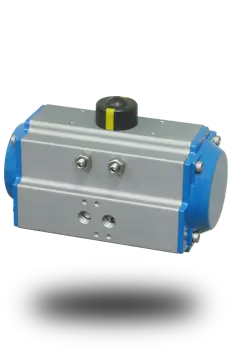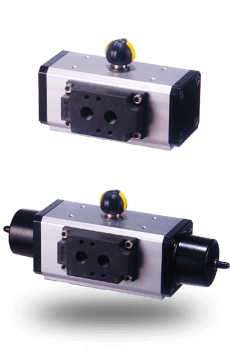About Pneumatic Valve Actuators
Pneumatic valve actuators use compressed air to provide the force needed to cause motion. There are two main types: Rotary and Linear. Rotary pneumatic actuators are used on ball vavles, butterfly valves, and plug valves. Linear pneumatic actuators are found on rising stem valves like globe and gate valves. There are also valve types that have built-in linear pneumatic actuators such as coaxial and angle seat valves.
Advantages of Pneumatic Valve Actuators
- Fail-Safe Position
When used in conjuction with springs, "Spring Return" pneumatic actuators use air to move the valve in one direction and compress springs while doing so. Then, when the air is vented, the springs decompress to move the valve back to the opposite position. This ensures that the vavle will return to its "fail-safe" position in the event that compressed air or electricity is lost. - Fast Actuation
Pneumatic actuators provide much faster actuation cycle times than electric actuators. They also have higher duty cycle which allows them to perform well in high-cycle and rapid-cycle applications. - Safe for Hazardous and High Temperature Locations
Since there is no potential for sparking with air driven actuators, they are safe for use in explosive atmospheres. If the actuator's solenoid valve is mounted on the actuator, that must have an explosion proof coil of course. Pneumatic actuators are also typically better suited for high temperature environments, as long as high temperature seals are used.
Types of Pneumatic Valve Actuators
There are several different types of pneumatic actuators. We keep a large stock of the most common types of pneumatic actuators which are dual rack and pinion and dual scotch yoke. We do, however, have access to all types of air-operated actuators. If you do not see what you are looking for, please give us a call.




